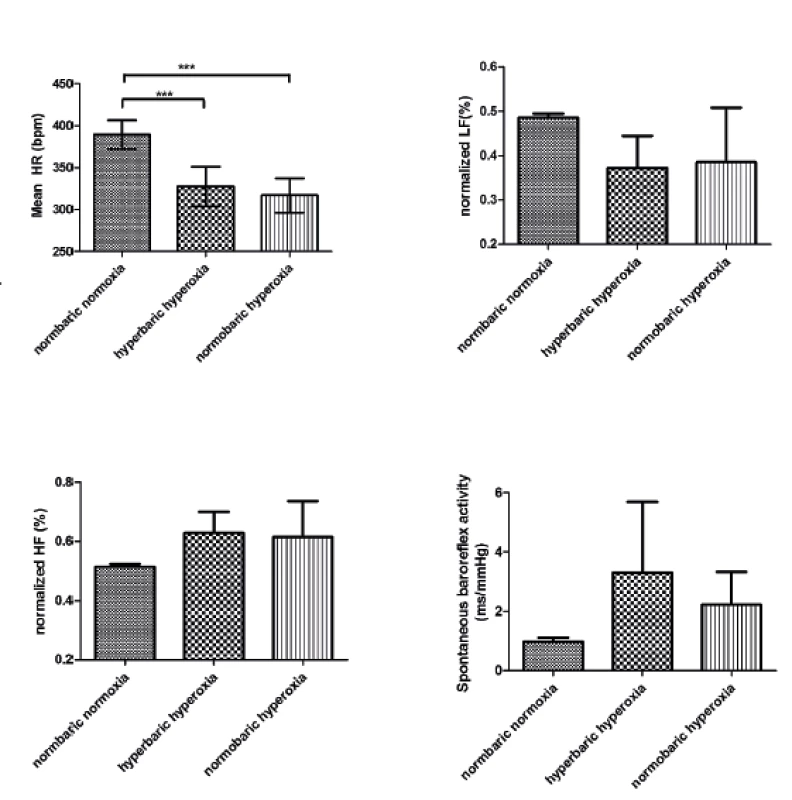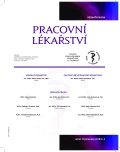Telemetric measurement of rats during experimental dives in a hyperbaric chamber – a pilot study
Authors:
M. Rozložník 1,2,3,4; L. Molčan 5; P. Svitok 5; C. Balestra 1; M. Zeman 5
Authors‘ workplace:
Environmental, Occupational & Ageing Physiology Laboratory, ISEK, Haute Ecole Henry Spaak, Brussels, Belgium, Head of the laboratory prof. Constantine Balestra, PhD.
1; DNB consult, s. r. o., Kežmarok, Slovakia, Executive manager Dr. Miroslav Rozložník
2; Science park, Comenius University, Bratislava, Slovakia, Director prof. RNDr. Ján Turňa, CSc.
3; Department of Biomedical Sciences, Medical Faculty in Ostrava, Czech Republic, Head of Department Stejskal David, prof. MUDr., Ph. D., MBA
4; Department of Animal Physiology and Ethology, Faculty of Natural Sciences, Comenius University, Bratislava, Slovakia, Head of Department prof. RNDR. Michal Zeman, DrSc.
5
Published in:
Pracov. Lék., 70, 2018, No. 3-4, s. 136-138.
Category:
Overview
SCUBA diving is associated with significant changes in human physiology. The most influenced organ systems are the cardiovascular, respiratory and nervous system. Traditionally, the diver is monitored pre and post dive, since environmental conditions while diving represents the main technological constraints for real-time measurements. These, together with the complexity of triggered physiological changes, limit our deep understanding of the effect of scuba diving on a diver’s physiology. The aim of this study was to develop and test telemetric measurement of heart rate and heart rate variability (HRV) in un-anesthetized conscious rats during experimental dives in the experimental hyperbaric chamber. Our pilot study showed the feasibility of telemetric measurement of heart rate and HRV up to pabs 300 kPa. Data indicate, that oxygen sensing might play a more significant role in cardiovascular adjustment to hyperbaric hyperoxia, however, more experiments are needed to fully understand underlying mechanisms.
Keywords:
heart rate – diving – rat – hyperoxia – telemetry
INTRODUCTION
Hyperoxic hyperbaric exposure has significant effects on the cardiovascular system, including bradycardia, hypertension, vasoconstriction, reduced cardiac output, and endothelial dysfunction. The baroreflex-mediated pathway is believed to be the underlying mechanism. Although these effects have been investigated for many years, and several hypotheses have been proposed to explain them individually, no physiological process that links them through a common mechanism is known [1]. In addition, to better understand underlying mechanisms determining hyperoxic bradycardia, an animal model was developed and cardiovascular changes associated with normobaric and hyperbaric hyperoxia were investigated in a telemetry monitored conscious rats.
MATERIAL AND METHODS
Six male Wistar rats prenatally exposed to a low oxygen environment (H), consisting of 10.5% O2 in 89 % N2 for 4 hours per day during final days (day 19 and 20) of gestation [2] and 5 control (C) Wistar rats were kept on a 12 : 12-hour light/dark cycle. Animals were implanted with a fluid-filled tip sensor (PA-C40; Data Sciences Int., Minnesota, USA) allowing radio-telemetric measurement of heart rate (HR) with a high frequency (up to 2000 Hz). From this data, we can evaluate heart rate variability (HRV; LF, HF, LF/HF) and spontaneous baroreflex sensitivity (sBRS). After the full post-surgery recovery, rats were enabled to habituate to the experimental conditions in the experimental hyperbaric chamber (3 shame exposures, 1x daily, same daytime). In the consecutive days, animals were placed in the experimental hyperbaric chamber, recorded for 10 min and exposed for 30 minutes to mild hyperbaric hyperoxia while breathing air at 20 m (ppO2 63 kPa, pabs 300 kPa) or normobaric hyperoxia while breathing EAN67 (ppO2 67 kPa, pabs 100 kPa). HR, HRV, and sBRS were calculated. The experiments were proved by the Ethical committee of the Institute of Experimental Pharmacology and Toxicology, Slovak Academy of Sciences and the by the State Veterinary and Food Authority of the Slovak Republic.
RESULTS
Rats restrained in dark, soundproof and scentless hyperbaric chamber showed no significant effects of habituation in HR (p = 0.55), LF/HF (p = 0.17) and sBRS (p = 0.66) in both groups during shame dives (normobaric normoxia). In addition, no significant differences in HR (p = 0.98) and LF/HF (p = 0.55), between C and H group was observed in this experimental setup, while sBRS was significantly (p < 0.05) decreased in H in comparison to C rats.
Hyperbaric and normobaric hyperoxic exposure led to the development of significant hyperoxic bradycardia (p ≤ 0.001). Changes in the HR were not accompanied by significant changes in HRV, nor body core temperature and locomotor activity. However, sBRS showed a tendency for a modulated response when H rats were exposed to normobaric and hyperbaric hyperoxia (Fig. 1).

Figure 1. Mean heart rate, heart rate variability (LF, HF) and spontaneous baroreflex sensitivity during various exposures in H rats (ANOVA, Tukey posthoc test)
This study showed the feasibility of telemetric measurement of HR and HRV up to pabs 300 kPa. Data indicate, that oxygen sensing might play a more significant role in cardiovascular adjustment to hyperbaric hyperoxia, however, more experiments are needed to fully understand underlying mechanisms.
Acknowledgment
The research leading to these results has received funding from the People Programme (Marie Curie Actions) of the European Union's Seventh Framework Programme FRP/2007-2013/ under REA grant agreement n° 264816 and by grants VEGA 1/0686/12, 2/0107/12 and NOREG.
Do redakce došlo dne 5. 9. 2018.
Do tisku přijato dne 11. 9. 2018.
Adresa pro korespondenci:
Dr. Miroslav Rozložník
Department of Biomedical Sciences, Medical Faculty in Ostrava
Czech Republic
e-mail: miroslav.rozloznik@osu.cz
Sources
1. Demchenko IT., Zhilyaev SY, Moskvin AN, Krivchenko AI, Piantadosi CA, Allen BW. Baroreflex-mediated cardiovascular responses to hyperbaric oxygen. J Appl Physiol (1985). 2013;115(6):819–828.
2. Ujhazy E, Dubovicky M, Navarova J, Sedlackova N, Danihel L, Brucknerova I, Mach M. Subchronic perinatal asphyxia in rats: Embryo-foetal assessment of a new model of oxidative stress during critical period of development. Food Chem Toxicol., 2013 Nov;61 : 233–239.
Labels
Hygiene and epidemiology Hyperbaric medicine Occupational medicineArticle was published in
Occupational Medicine

2018 Issue 3-4
Most read in this issue
- Real effectiveness of respirators in protecting airways
- Lung squeeze and freediving
- Eczema of the hands
- Risk assessment for employees exposed to vibrations at work in manipulation – expedition storage – Part 1 – Scientific background
